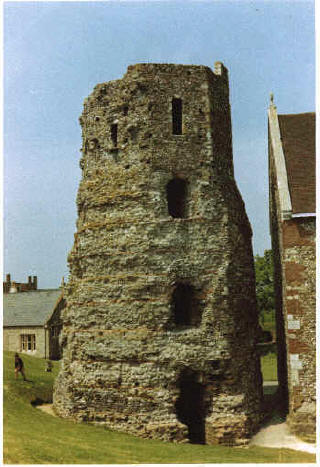"The supposition is that when the head of the British insurrection
was broken at Dover, Aulus Plautius, who did not proceed inland with
Vespasian and Titus, remained here and fortified the Castle Hill with
towers and earthworks. To raise stone buildings, their ships had
to bring materials across the Channel, and to assist the navigators,
they first built the lighthouse known as the Pharos. Having no
stone at hand, they constructed the Pharos with blocks of tufa dug up in
the valley of the Dour, interlocking the blocks with peculiarly
manufactured tiles made on the spot from local clay. So
constructed, the tower was strong enough to serve as a lighthouse.
In the thirteenth century it was heightened, and strengthened with a
stone casing, the casing being renewed in the Fifteenth Century, but the
exposure to weather during five centuries in some parts entirely
destroyed the outer covering rendering work of preservation necessary,
which was carried out under the order of Earl Beauchamp by the Office of
Works in 1913, when the architect, Mr. Frank Baines, reported that
although the fifteenth century casing had, in parts perished, the
original Roman core was perfectly sound." (J.B.J.
1916)
